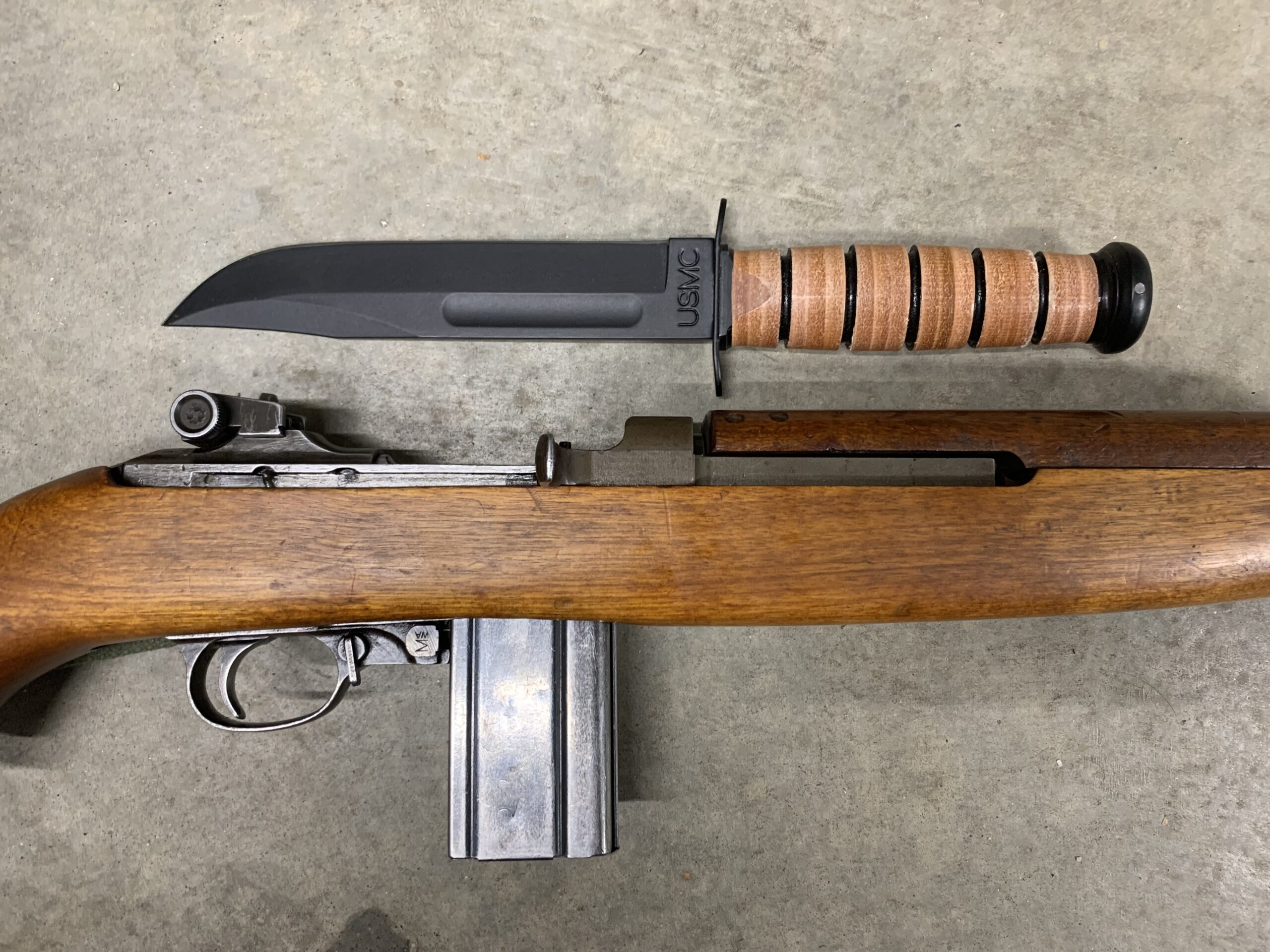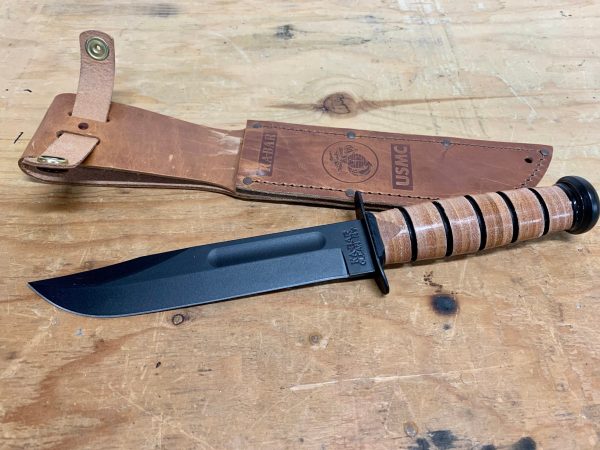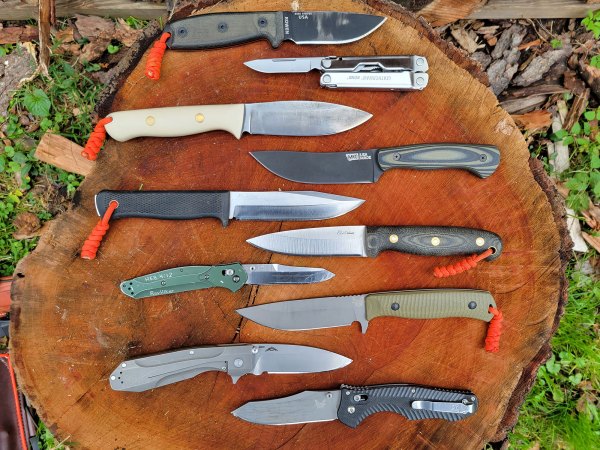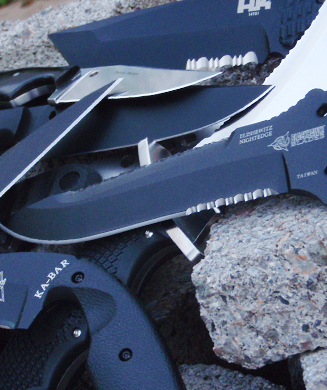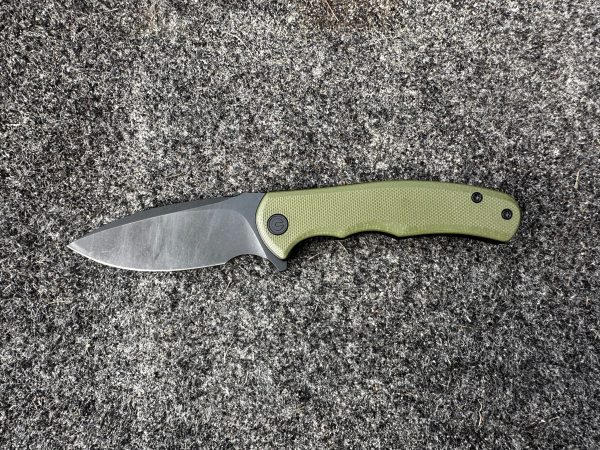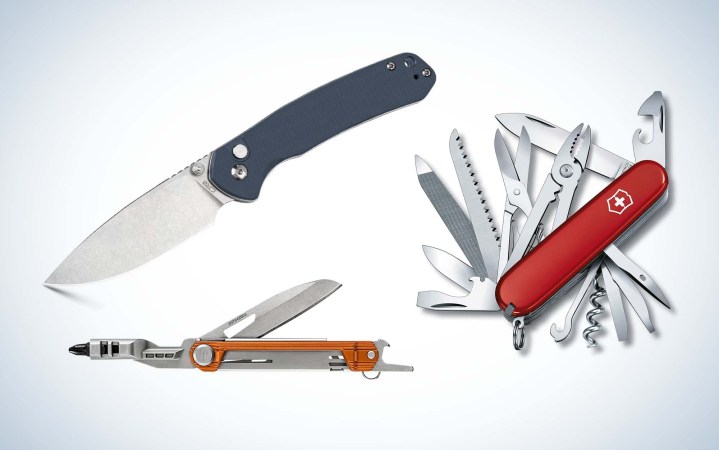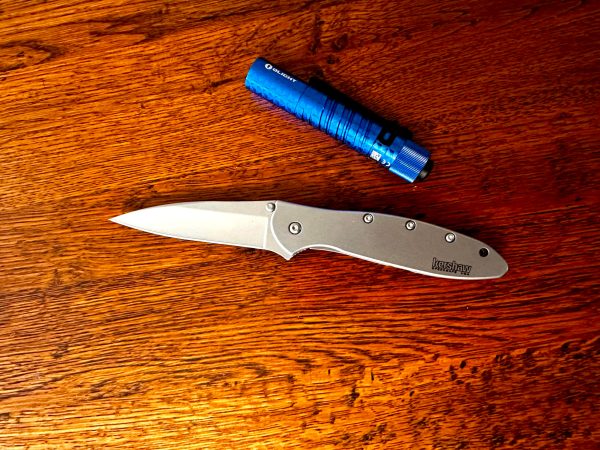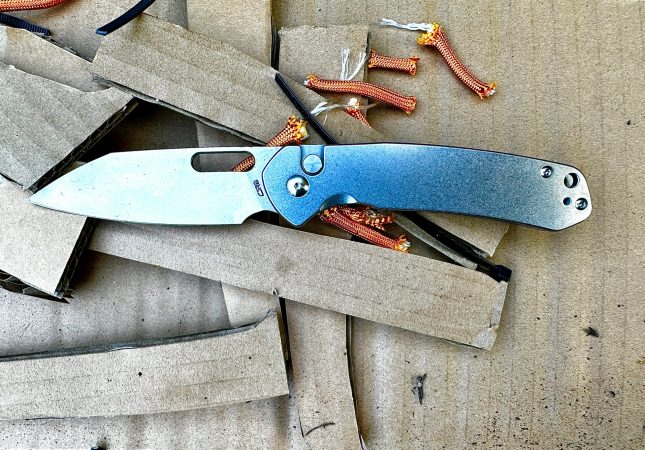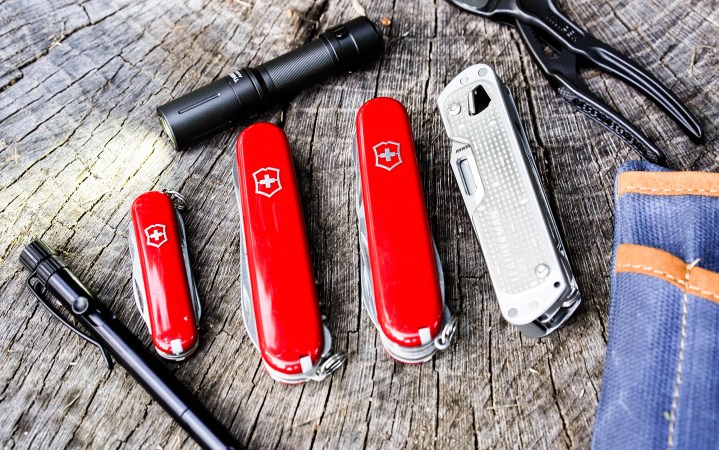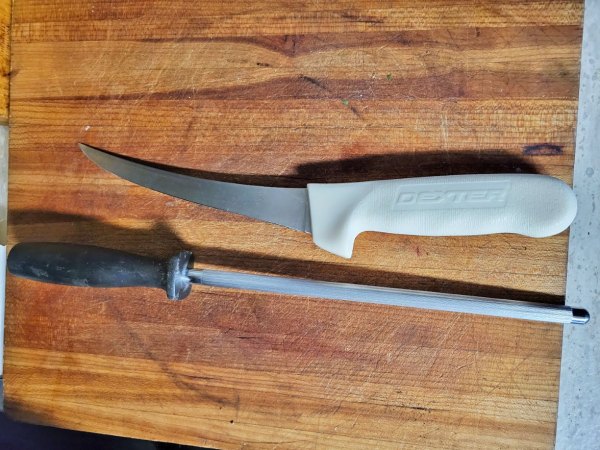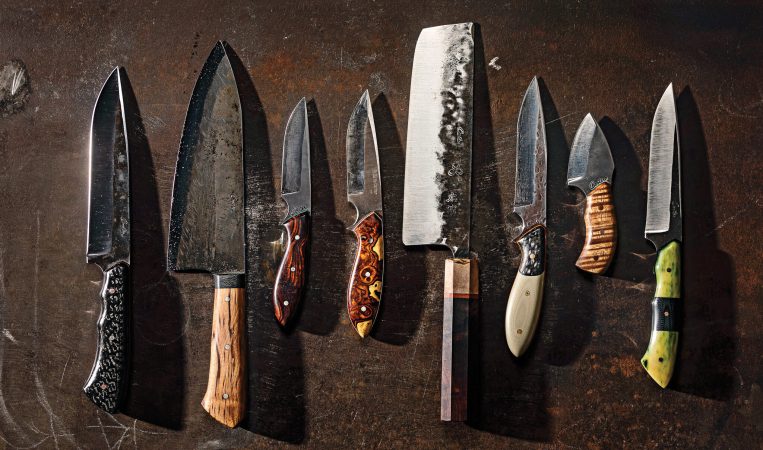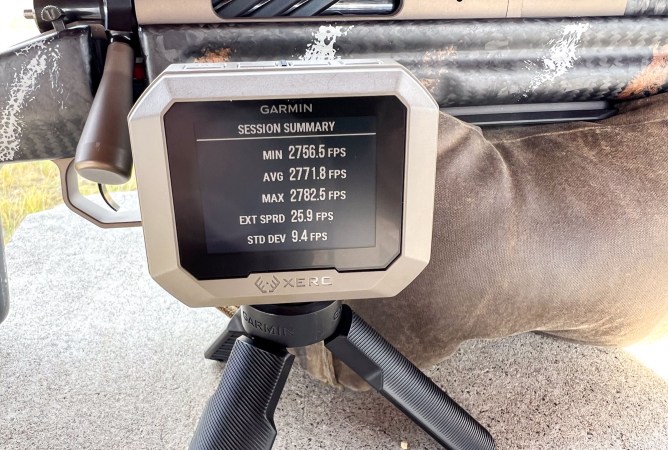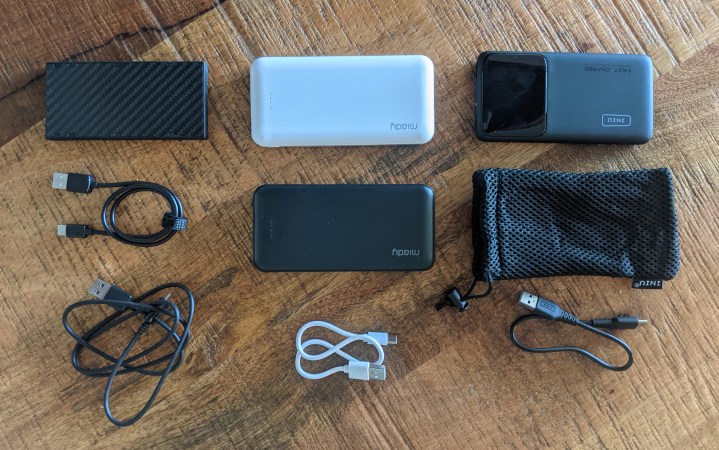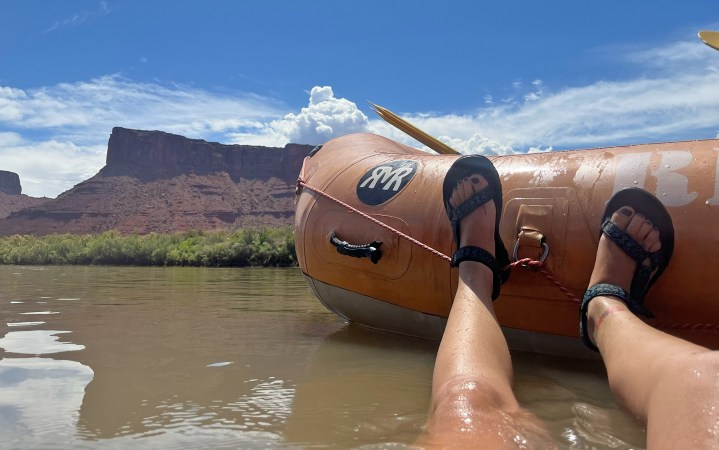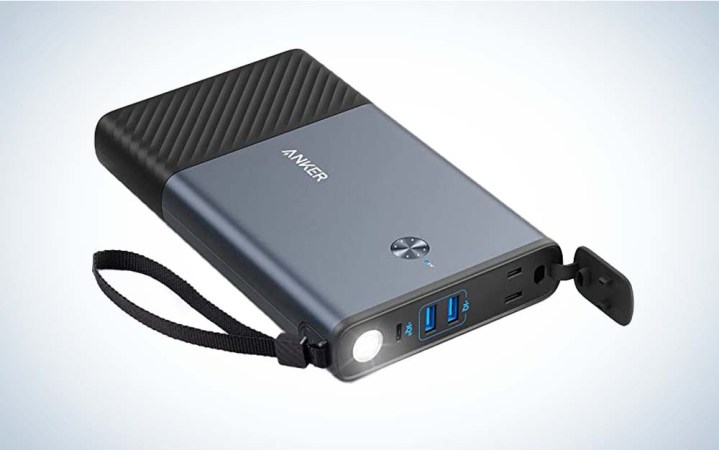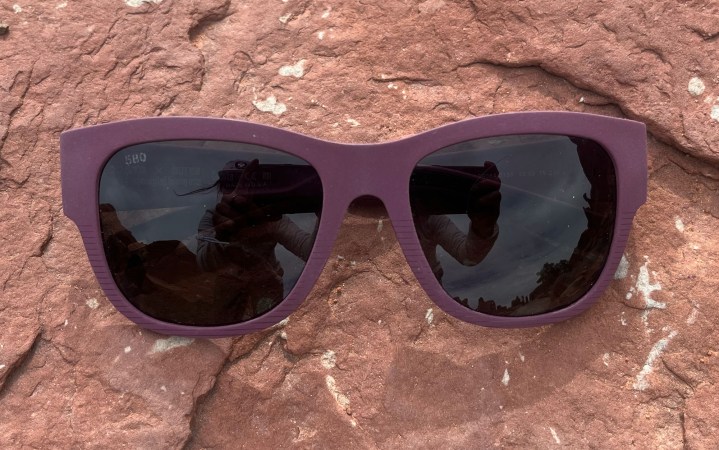We may earn revenue from the products available on this page and participate in affiliate programs. Learn More ›
Aside from the Bowie knife, there’s likely not a more well-known American knife than the Ka-Bar. The highly lauded blade became synonymous with the United States Marine Corps and combat in the Pacific Theater during World War II, but it’s one of few pieces of gear that’s just as useful today as it was 80 years ago. Marines, sailors, soldiers, and civilians have embraced the Ka-Bar knife for decades, but most don’t know the interesting history of the knife or the company that has become Ka-Bar.
History of the Ka-Bar Knife
What became known simply as a “Ka-Bar” was a blade that Union Cutlery president Danforth Brown helped submit to the U.S. Marine Corps. It was designated as the 1219C2 USMC fighting and utility knife in 1942, and was quickly put into production by Union Cutlery and several other companies. Wartime production of weapons and equipment often involved a variety of manufacturers building the same product. For example, Winchester and Inland Manufacturing built the lion’s share of M1 Carbines during the war, but other companies such as IBM made them too. The M1 Garand was a Springfield Armory product, but was also produced by Winchester, International Harvester, and Harrington and Richardson.
Union Cutlery, which would later become Ka-Bar, didn’t actually produce the highest volume of the 1219C2 knives. Camillus Cutlery produced the most, but it and other manufacturers typically stamped the company name and city on the blades that were shipped. Instead of that, Union Cutlery stamped theirs with “KA-BAR.” As the knives gained popularity with servicemen, the 1219C2 USMC fighting and utility knife became widely referred to as a Ka-Bar knife.
During World War II, there were so many Ka-Bar knives manufactured that production ceased after 1945. There were enough surplus blades that they were issued throughout the Korean and Vietnam wars. There wasn’t a new Ka-Bar USMC fighting and utility knife made until the 1970s.
Following the recognition of their trademark Ka-Bar-stamped wartime knives, Union Cutlery changed its name to Ka-Bar in 1952. Since the 1970s reintroduction, they’ve continued to produce the famous USMC knife, and the blades were used by military forces around the world.
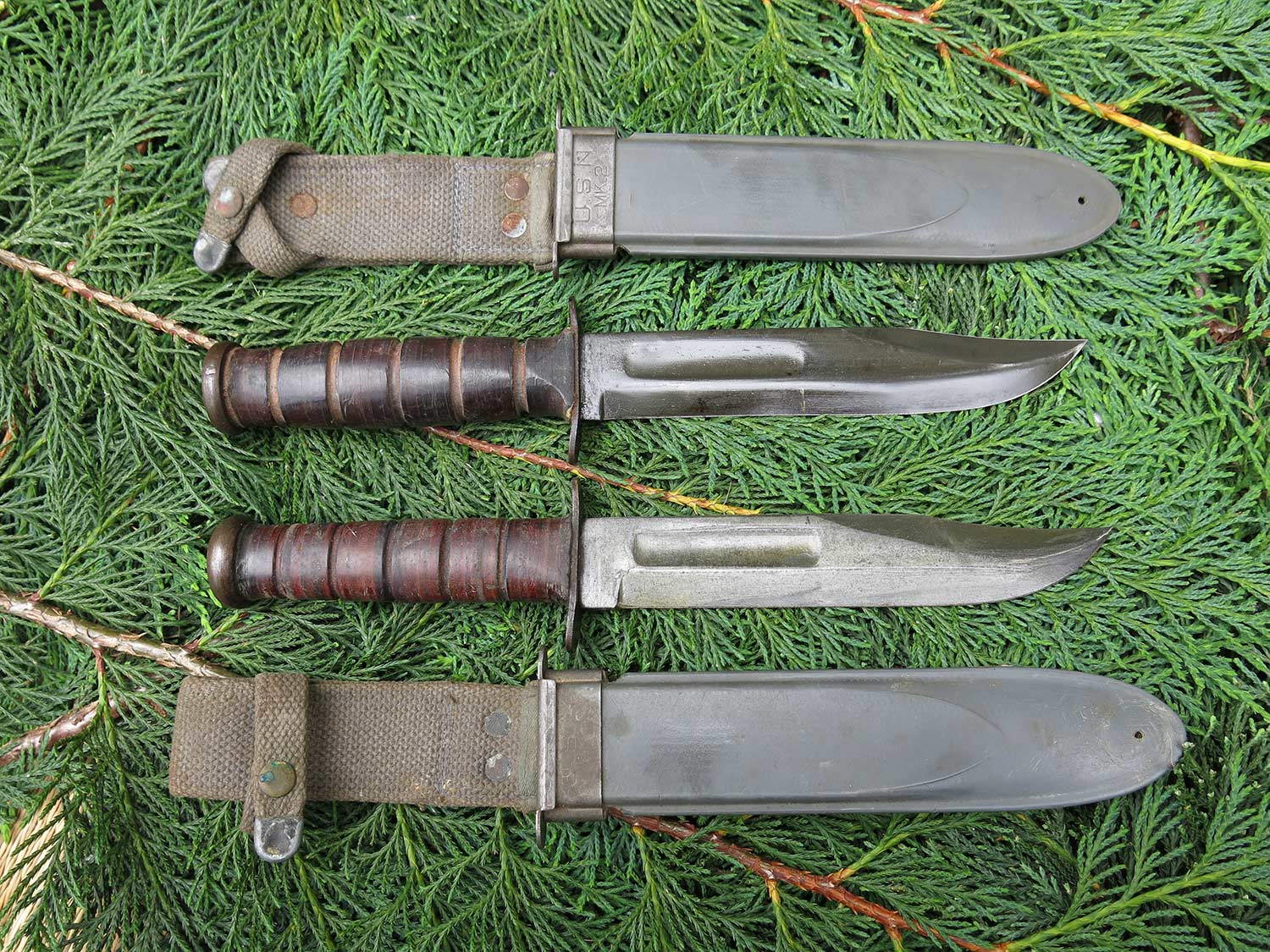
As Vietnam vet Steven Dick wrote for Outdoor Life the knife pattern became standard issue for the Vietnam War: “When the Vietnam War started, the military made the wise decision to make the ka-bar pattern knife a service-wide standard issue item. The “USMC” and “USN” stamps were dropped and the knives were simply marked “US” with the maker’s name below. Outside of the Marines, the demand for the knives always exceeded the supply reaching the real troops on the ground. In my own Ranger Company about the only teams equipped with ka-bars were those that had spent time cross-training with Marine Recon units. The limited number of the Camillus knives that did reach our own supply system always seemed to end up in the hands of officers and senior NCOs. Special Forces teams did manage to find better quantities than we did, and the knife was available on the civilian market if you were willing to take the time to mail-order one. Still, this was the one model knife that most ordinary ground pounders wanted, but had a hard time obtaining throughout the long war.“
The Legendary Ka-Bar Name Has a Legendary Story
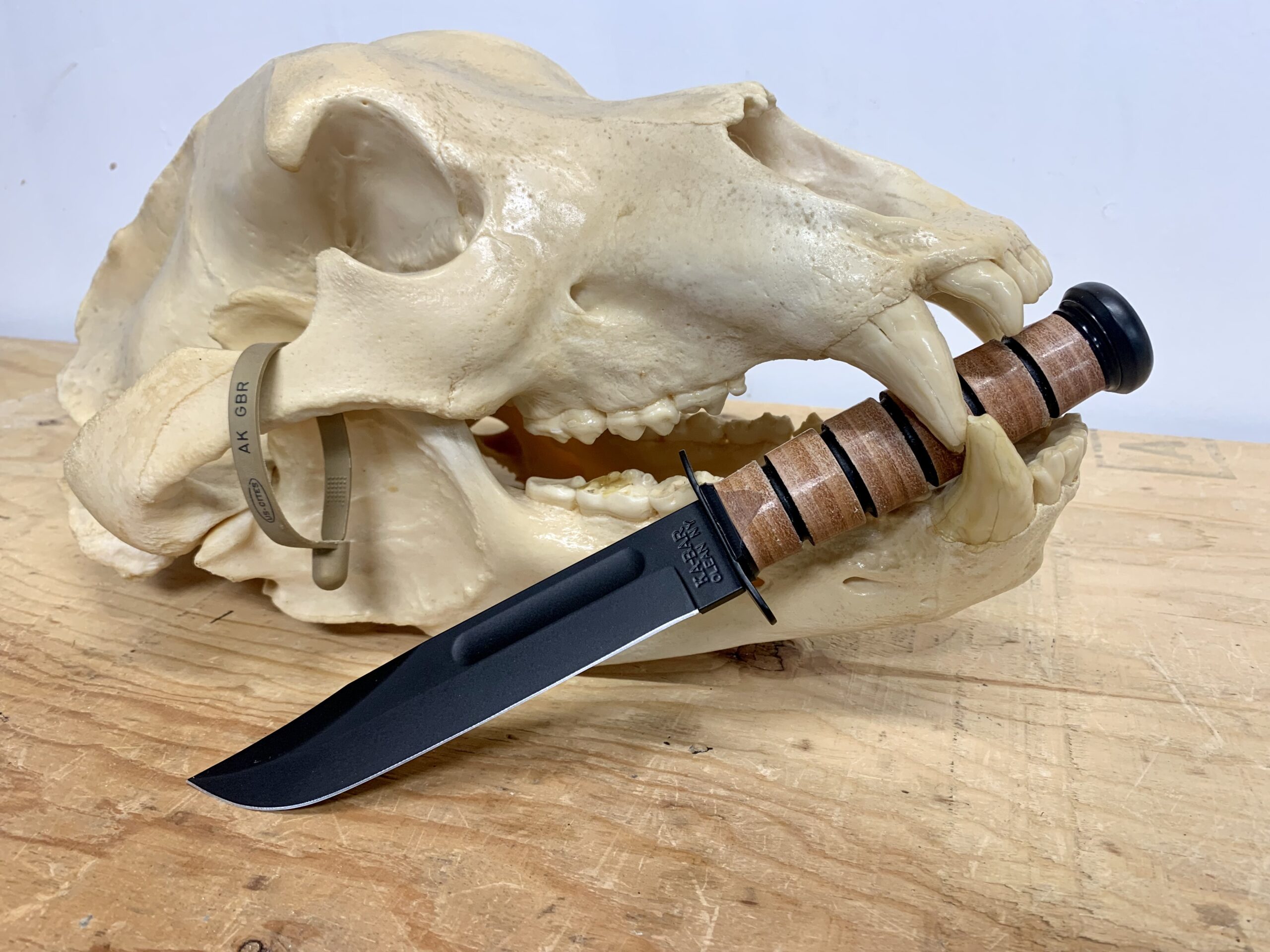
Anyone familiar with knives knows a Ka-Bar for the USMC fighting and utility knife, but most have no idea where the name came from, or that the roots of the name come from Union Cutlery’s popular hunting knives in the early 1900s. The story, which was long considered myth but recently verified by old company documents, begins with a Kodiak brown bear skin that was sent to Union Cutlery president Wallace Brown with a note. The note was from a hunter or trapper in Alaska who had his rifle knocked from his hands by a wounded brown bear. He reported that he killed the bear with his hunting knife made by Union Cutlery. The hide was a token of his gratitude to the knife maker.
Some versions of the story link “Ka-Bar” to the phrase kill a bear, sometimes pronounced “kill a bar.” A seasoned old sourdough could conceivably pronounce “kill a bear” in a mountain man shorthand “Ka-Bar.” Though the company found evidence to verify the letter and bear hide sent to Wallace Brown, they say that “Ka-Bar” is a derivative of “Kodiak bear.” In a marketing move that wouldn’t really take hold for another 20 years, they trademarked the term Ka-Bar as a brag on the toughness of their knives in 1924. After all, one had been used to kill the biggest and toughest of all bear species. Long before the USMC knife, Union Cutlery was stamping “Ka-Bar” on the blades of a number of their hunting knives.
The Modern Ka-Bar Knife
Specs
- Weight: 11 ounces (measured)
- Overall length: 11.875 inches
- Blade length: 7 inches
- Blade width: 1.230 inches
- Blade thickness (at spine): .172 inches
- Blade shape: Clip point
- Edge angle: 20 degrees
- Blade material: 1095 Cro-Van carbon steel
- Handle material: Stacked leather washers
- Pommel: Commercial-grade carbon steel
- Finish: Epoxy powder coating, black
Anatomy of a Ka-Bar USMC Fighting and Utility Knife
The 1219C2 C2 USMC Ka-Bar Knife is a simple tool that excelled at a variety of tasks. As manufactured by a variety of companies during World War II, there was certainly some variability in materials and quality, but the basics of the knives were the same. The knife had an overall length of just under 12 inches, with a 7-inch-long blade. The heavy-duty blade had a thick clip point and fullers along each side of the blade. These are often referred to as blood grooves, but their purpose was to lighten the blade while maintaining stiffness (they weren’t designed to prevent the blade from sticking in a stab wound).
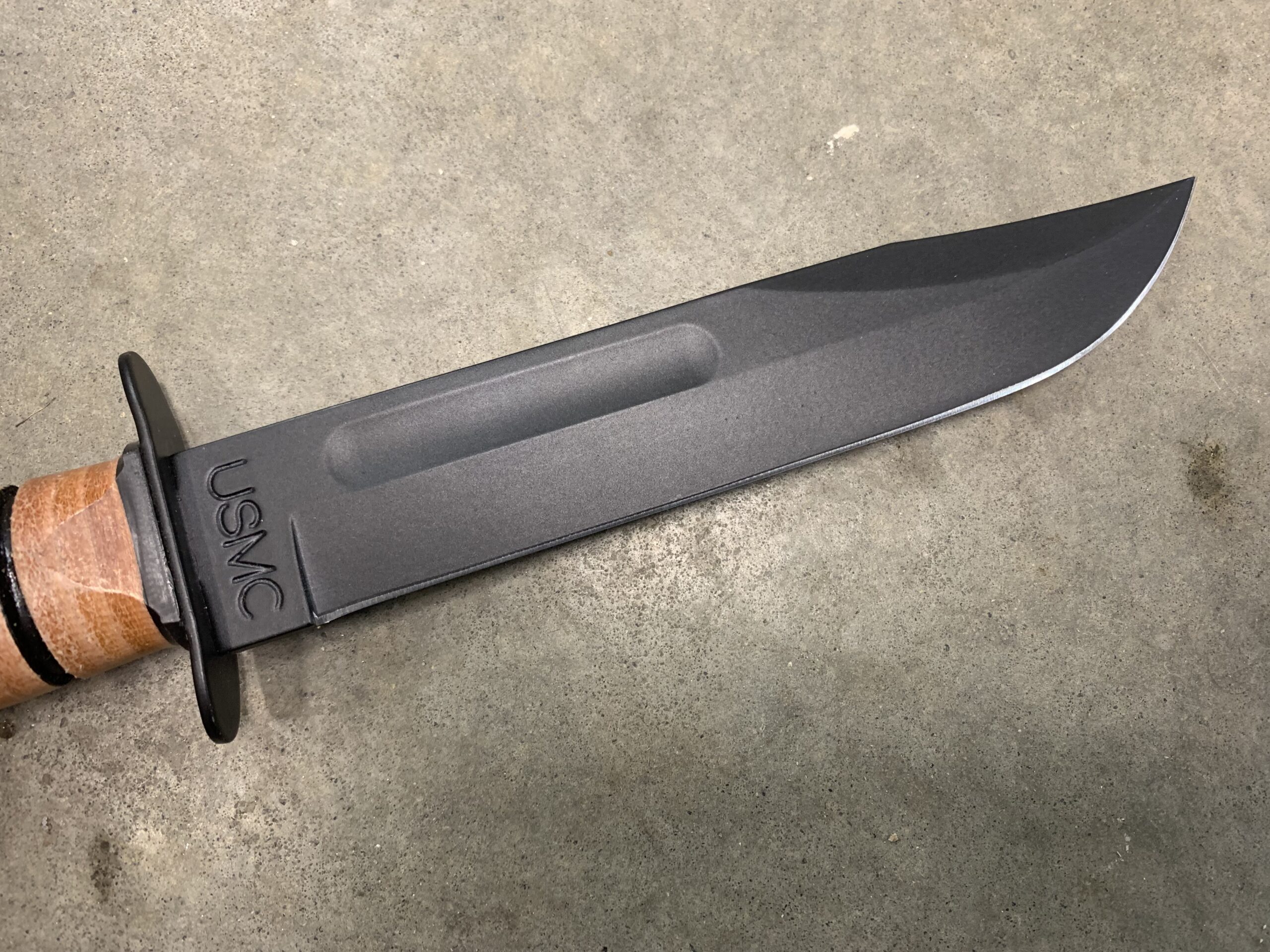
The Ka-Bar knife’s guard is slightly rounded, with the points tipping back toward the handle. The handle is covered with tightly-compressed, stacked leather washers. The leather is turned down to a comfortable grip, with gripping grooves ground into it. This provides a very durable handle that the user can hang onto in a variety of conditions. The back end is finished with a round pommel that’s pinned to the handle.
Original Ka-Bar knives were given a Parkerized finish—common for many steel tools and weapons of that era. Today, the USMC fighting and utility knife is given a black epoxy powder coating. The blade itself is now made from 1095 Cro-Van steel, which is 1095 carbon steel with added Chromium and Vanadium to aid edge retention and durability. This carbon steel is tough, holds an edge well, and is relatively easy to resharpen.
The Ka-Bar Knife Is Primarily a Utility Tool
The Ka-Bar knife was designed and issued in-part as a tool for hand-to-hand combat, but its primary function was utilitarian. In the way that I might skin a black bear with the Leatherman Skeletool I carry in my pocket every day, it gets most of its use by tightening screws, clipping wire, and opening boxes or paint cans. A Ka-Bar knife was a serviceman’s constant companion. Sure, it was a valuable fighting tool, and some memoirs recount Marines ghoulishly extracting gold teeth from fallen enemy soldiers with them, but most Ka-Bars were used only for opening rations and ammunition crates, digging, cutting brush, and just about anything else a big knife would be handy for. In a book I read as a teenager—I can’t recall the title—a Marine in Vietnam recounted using his Ka-Bar for everything, and noted how well it worked to dig in the clay and improve fighting positions.
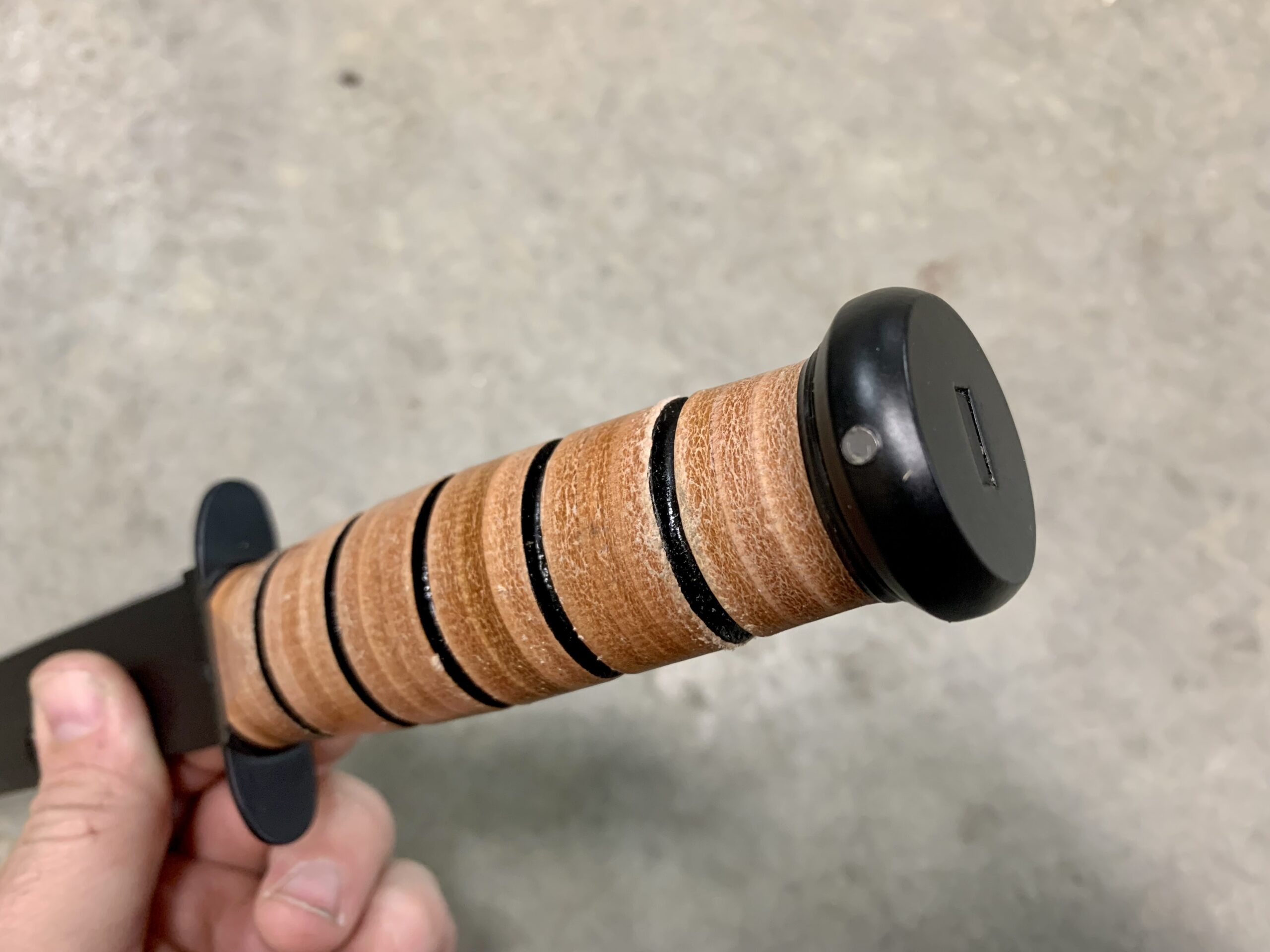
The Ka-Bar knife still makes an excellent utility tool or bushcraft knife. The heavy-duty clip point is highly resistant to breakage, and the straight edge is easy to resharpen. The spine of the knife is thick enough that it works well to baton and split kindling. It’s too big to be a dedicated hunting and dressing knife, but it would fill the role in a pinch.
Read Next: The Best Skinning Knives
FAQs
Ka-Bar knives are generally great quality production knives, and the Union Cutlery Ka-Bars from World War II had a reputation as the best of the USMC fighting and utility knives.
Yes, Ka-Bar knives are made in the United States, though some sheaths are not.
Some Ka-Bar knives will rust if not properly cared for. The USMC Ka-Bar and many other styles use an epoxy coating that prevents corrosion, but the carbon steel that’s exposed on the edge will rust if you don’t oil it or if you store it in the leather sheath.
A Ka-Bar knife will last a lifetime if properly cared for, depending on what you use it for. Like any tool, if you use it hard and don’t take care of it, it won’t last forever.
Final Thoughts on Ka-Bar
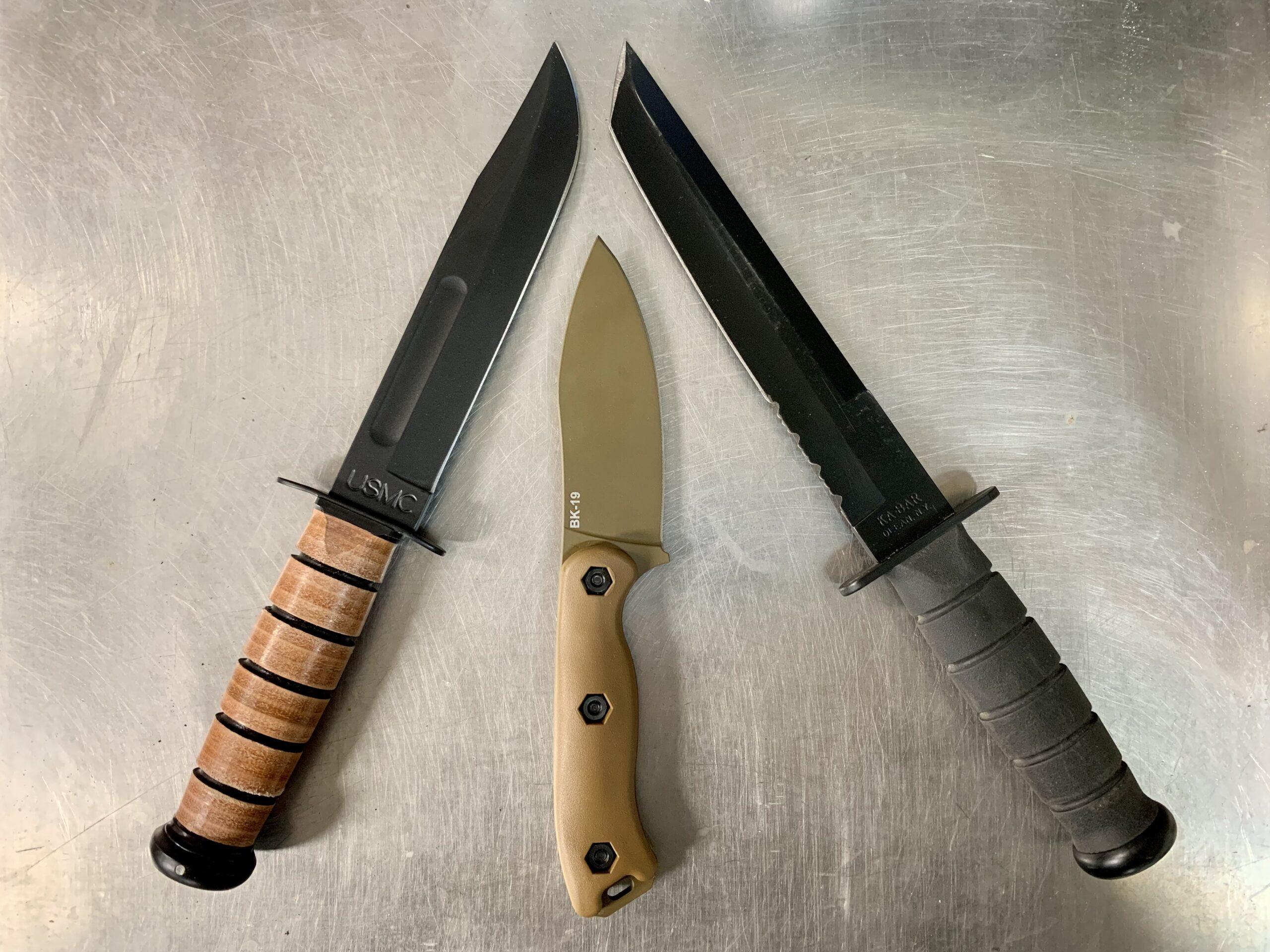
These days, Ka-Bar has expanded to many other models in the same style as the original knife—and many other styles, too. They produce fixed-blades and folders, duty and defensive knives, hunting knives, pocket knives, and some really cool novelty items like Ka-Bar chopsticks and pizza cutters.

Becker Knife and Tool
Ka-Bar has done a number of collaborations with knife makers over the years, and their current line designed by Ethan Becker features some great blades. One of their newest is the BK19 Becker Nessmuk which, in a way, is a great modern representation of the type of utilitarian knife the USMC Ka-Bar was and is. It’s shorter at a hair over 9 inches long. The BK19 is stout, has durable grip scales, a great rounded belly to the blade, and the blade is thick. It is considered one of the best survival knives, but is nimble enough to be a great option for skinning and breaking down big game, too. Though I hope they never stop making the Ka-Bar knife the company is known for, but variety and innovation will help ensure that Ka-Bar remains a dependable brand long into the future.

